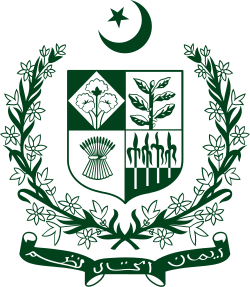
Back পাকিস্তানের সাধারণ নির্বাচন, ১৯৮৮ Bengali/Bangla Parlamentswahl in Pakistan 1988 German Élections législatives pakistanaises de 1988 French Pemilihan umum Pakistan 1988 ID پاکستان دے عام انتخابات 1988ء PNB Парламентские выборы в Пакистане (1988) Russian پاکستان کے عام انتخابات 1988ء Urdu 1988年巴基斯坦大选 Chinese 第4屆巴基斯坦下議院選舉 ZH-YUE
| ||||||||||||||||||||||
217 of the 237 seats in National Assembly 109 seats needed for a majority | ||||||||||||||||||||||
|---|---|---|---|---|---|---|---|---|---|---|---|---|---|---|---|---|---|---|---|---|---|---|
| Registered | 47,629,892 | |||||||||||||||||||||
| Turnout | 42.75% ( | |||||||||||||||||||||
| ||||||||||||||||||||||
 Map of Pakistan showing National Assembly Constituencies and winning parties | ||||||||||||||||||||||
| ||||||||||||||||||||||
 |
|---|
|
|
General elections were held in Pakistan on 16 November 1988 to elect the members of the National Assembly and Senate.
The elections saw the resurgence of Pakistan Peoples Party (PPP) under the leadership of Zulfikar Ali Bhutto's daughter, Benazir. Supporters of President Muhammad Zia-ul-Haq, who had died in August 1988, reorganised themselves into a nine-party alliance, the Islami Jamhoori Ittehad (IJI) with support from the intelligence agencies.[1] This marked the beginning of a decade-long two-party system between the left-wing PPP and right-wing IJI and its successor the Pakistan Muslim League (N).
The PPP emerged as the biggest party, winning 94 of the 207 seats in the National Assembly. The IJI came second with 56 seats amidst a voter turnout of just 43%. The PPP was able to form a government with other left-wing parties, including the Muttahida Qaumi Movement (MQM), with Bhutto becoming the first female Prime Minister in a Muslim country.
- ^ Hamid Gul accepts responsibility for creating IJI Dawn, 30 October 2012
© MMXXIII Rich X Search. We shall prevail. All rights reserved. Rich X Search



